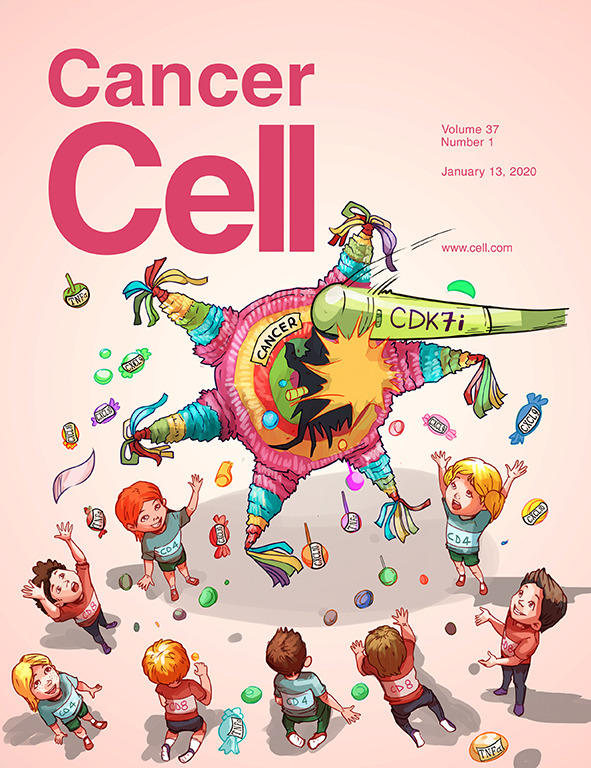环状RMST与谱系驱动转录因子共同调控神经内分泌转分化
IF 44.5
1区 医学
Q1 CELL BIOLOGY
引用次数: 0
摘要
环状RNA (circRNA)是一类具有调控潜能的非编码RNA。它在前列腺和肺腺癌向神经内分泌前列腺癌(NEPC)和小细胞肺癌(SCLC)的转分化中的作用尚不清楚。在这里,我们发现circRMST是一个异常丰富的circRNA,主要在NEPC和SCLC中表达,在人和小鼠之间具有很强的保守性。使用shRNA、siRNA、CRISPR-Cas13和Cas9进行的功能研究一致表明,circRMST对于肿瘤生长和ASCL1的表达至关重要,ASCL1是神经内分泌命运的主要调节剂。在NEPC基因工程小鼠模型中,基因敲除Rmst可阻止神经内分泌转分化,维持肿瘤处于腺癌状态。从机制上讲,circRMST与谱系转录因子NKX2-1和SOX2相互作用。circRMST的缺失通过自噬-溶酶体途径诱导NKX2-1蛋白降解,并改变SOX2的基因组结合,共同导致ASCL1转录缺失。本文章由计算机程序翻译,如有差异,请以英文原文为准。

Circular RMST cooperates with lineage-driving transcription factors to govern neuroendocrine transdifferentiation
Circular RNA (circRNA) is a class of noncoding RNA with regulatory potentials. Its role in the transdifferentiation of prostate and lung adenocarcinoma into neuroendocrine prostate cancer (NEPC) and small cell lung cancer (SCLC) remains unexplored. Here, we identified circRMST as an exceptionally abundant circRNA predominantly expressed in NEPC and SCLC, with strong conservation between humans and mice. Functional studies using shRNA, siRNA, CRISPR-Cas13, and Cas9 consistently demonstrate that circRMST is essential for tumor growth and the expression of ASCL1, a master regulator of neuroendocrine fate. Genetic knockout of Rmst in NEPC genetic engineered mouse models prevents neuroendocrine transdifferentiation, maintaining tumors in an adenocarcinoma state. Mechanistically, circRMST physically interacts with lineage transcription factors NKX2-1 and SOX2. Loss of circRMST induces NKX2-1 protein degradation through autophagy-lysosomal pathway and alters the genomic binding of SOX2, collectively leading to the loss of ASCL1 transcription.
求助全文
通过发布文献求助,成功后即可免费获取论文全文。
去求助
来源期刊

Cancer Cell
医学-肿瘤学
CiteScore
55.20
自引率
1.20%
发文量
179
审稿时长
4-8 weeks
期刊介绍:
Cancer Cell is a journal that focuses on promoting major advances in cancer research and oncology. The primary criteria for considering manuscripts are as follows:
Major advances: Manuscripts should provide significant advancements in answering important questions related to naturally occurring cancers.
Translational research: The journal welcomes translational research, which involves the application of basic scientific findings to human health and clinical practice.
Clinical investigations: Cancer Cell is interested in publishing clinical investigations that contribute to establishing new paradigms in the treatment, diagnosis, or prevention of cancers.
Insights into cancer biology: The journal values clinical investigations that provide important insights into cancer biology beyond what has been revealed by preclinical studies.
Mechanism-based proof-of-principle studies: Cancer Cell encourages the publication of mechanism-based proof-of-principle clinical studies, which demonstrate the feasibility of a specific therapeutic approach or diagnostic test.
 求助内容:
求助内容: 应助结果提醒方式:
应助结果提醒方式:


